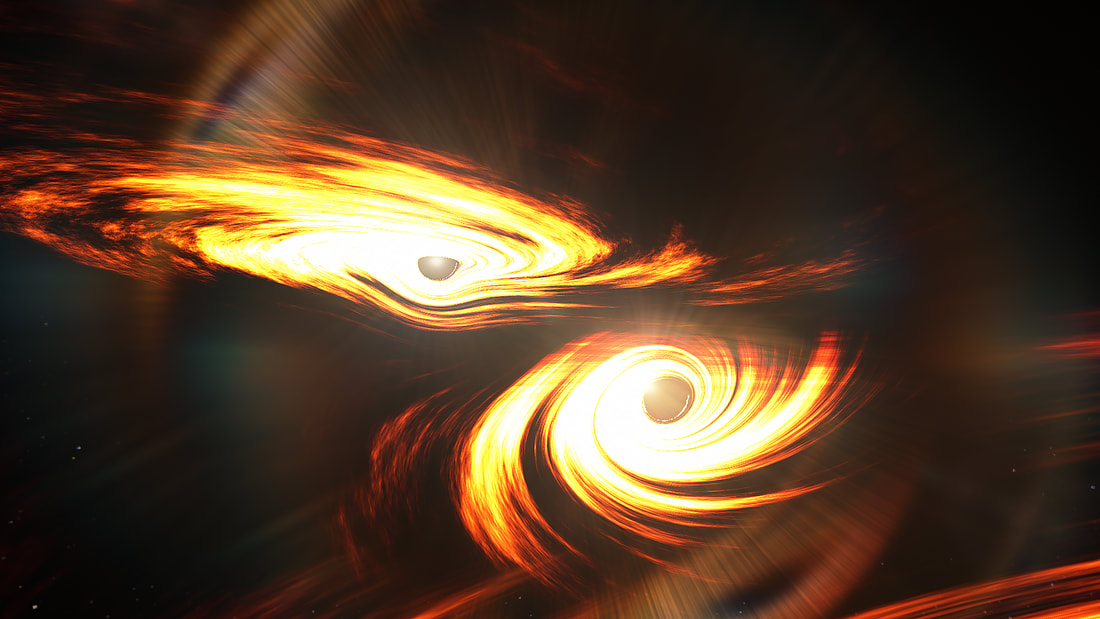|
With the growing catalogue of binary black hole mergers, researchers can study the overall spin properties of these systems to uncover how they formed and evolved. Recent work paints a conflicting picture of our understanding of the spin magnitudes and orientations of merging binary black holes, pointing to different formation scenarios. Our recent study, published in the Astrophysical Journal Letters, resolved these conflicts and allowed us to understand the spin distribution of binary black holes. Forming black hole binaries There are two main pathways to form a binary black hole: the first is via ‘isolated’ evolution, a process which involves the black hole binary being formed from the core collapse of two stars in a binary; the second is ‘dynamical’ evolution where interactions between black holes in dense stellar clusters can lead to a pair of black holes capturing each other to form a binary. These pathways show distinct features in the spin distribution of binary black hole mergers. Binaries formed via isolated evolution tend to have spins that are closely aligned with the orbital angular momentum, whereas dynamically formed systems have spins that are randomly orientated and have a distribution of spin tilts that is isotropic. In the latest population study from LIGO-Virgo, we saw evidence for both of these channels, however a more recent study by Roulet et. al 2021, showed that the population was consistent with the isolated channel alone. This inconsistency raises the question: how can we obtain different conclusions from the same population? The answer is model misspecification: The previous spin models were not designed to capture possible sharp features or sub-populations of spin in the model. The emerging picture of the spins of black hole binaries Using a catalogue of 44 binary black hole mergers, this new study finds evidence for two populations within the spin distribution of black hole binaries: one with negligible spins and the other moderately spinning with preferential alignment with the orbital angular momentum. This result can be fully explained via the isolated formation scenario. The progenitors of most black holes lose their angular momentum when the stellar envelope is removed by the binary companion, forming black hole binaries with negligible spin, while a small fraction of binaries have the second-born black hole spun up via tidal interactions.This study opens a number of interesting avenues to explore, for example, an investigation of the relationship between the mass and spin of these different subpopulations. Investigating such correlations can help improve the accuracy of our models and enable us to better distinguish between different evolution pathways of binary black holes. Written by OzGrav PhD student Shanika Galaudage, Monash University Recently published in ApJL https://iopscience.iop.org/article/10.3847/2041-8213/ac2f3c
0 Comments
Leave a Reply. |
|
- Home
- About
-
Our People
- Chief Investigators
- Partner Investigators
- Associate Investigators
- Postdocs and Students >
- Professional & Outreach staff
- Governance Advisory Committee
- Scientific Advisory Committee
- Executive Committee
- Equity & Diversity Committee
- Early Career Researcher Committee
- Professional Development Committee
- Research Translation Committee
- OzGrav Alumni
- Research Themes
- Education and Outreach
- Events
- News/Media
- Contact Us
- Home
- About
-
Our People
- Chief Investigators
- Partner Investigators
- Associate Investigators
- Postdocs and Students >
- Professional & Outreach staff
- Governance Advisory Committee
- Scientific Advisory Committee
- Executive Committee
- Equity & Diversity Committee
- Early Career Researcher Committee
- Professional Development Committee
- Research Translation Committee
- OzGrav Alumni
- Research Themes
- Education and Outreach
- Events
- News/Media
- Contact Us


 RSS Feed
RSS Feed








